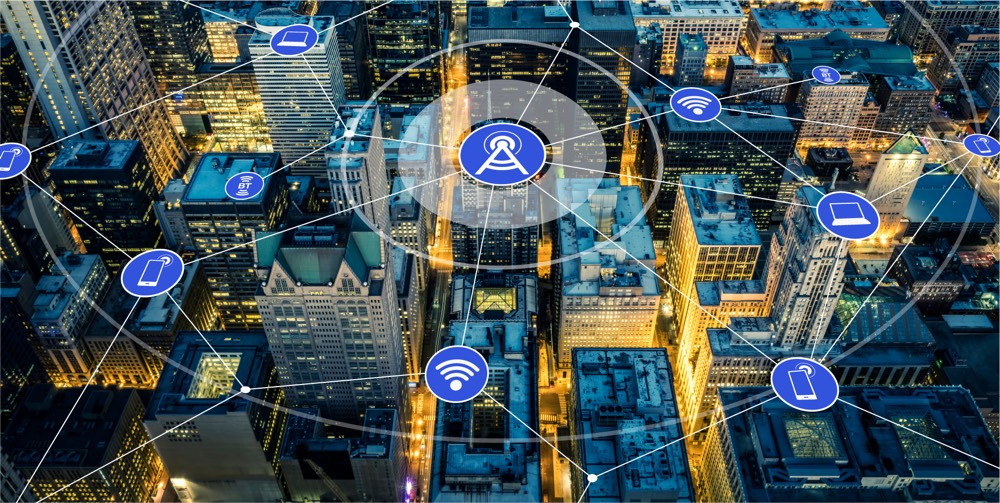As a participant in this market, you need to establish centralized management connections for IoT devices located in different geographic regions. Connectivity is a key enabler of IoT, and it allows your devices to communicate with centralized IoT applications. The possibilities associated with CSP and the Internet of Things are not limited to providing connectivity.
These IoT solutions make connecting devices to the Internet easier to deploy and manage than ever before, enabling organizations to focus on providing customers with innovative IoT capabilities and bringing a huge return on investment to their business. The Internet of Things is promoting progress in various fields by introducing connected solutions, including utilities, connected vehicles, agriculture, healthcare, transportation, and the safety of businesses and homes. The potential applications of sensors and IoT devices involve many industries, and IoT technology has accelerated the development of smart cities, autonomous vehicles, and interconnected industrial technologies.
The Internet of Things (IoT) space has expanded rapidly over the past decade and will reach 20 billion connected devices by 2020. In our rapidly evolving digital world, the Internet of Things (IoT) is rapidly expanding and is expected to reach 18 billion connected devices by 2022.
IoT or the Internet of Things is a network composed of devices, household appliances, vehicles, and other things. It integrates sensors, electronic devices, software, communications, and actuators; allowing them to connect and exchange data. From connections, sensors, and gateways to cloud and application systems, the architecture of the Internet of Things consists of various components that work together. In addition to vertical integration within specific industries or applications, the diversity of digital ecosystems means that horizontal interoperability between different devices and systems is also critical to the success of scalable IoT networks.
In short, interoperability is the key to a reliable and scalable IoT network and requires special consideration in architecture design. In terms of device connection, the network environment is still complex and fragmented, because there is no universal protocol that can cover all IoT use cases. Similarly, providing end-to-end connectivity for the Internet of Things can be difficult because it requires multiple vendors, and companies may find that they need different solutions for potential use cases.
Addressing these challenges will be critical to the long-term growth of IoT networks and the associated technologies that underlie them. In addition to connectivity and scalability issues, network providers and device vendors must also continually evolve existing data security models for IoT devices to deal with the constant threat of device or network compromise. As the IoT environment continues to grow and evolve, new standards such as MIOTY will expand connectivity around the world and help create a more competitive market environment and better products for customers.

By continuing to be a leader in wireless technology, we enable our customers to innovate, achieve business continuity, and strengthen global businesses and economies. We will continue to make technology smaller, more efficient, more reliable, and more affordable, thereby providing opportunities such as scalable connectivity for billions of devices.
No technology on the market can provide a complete, end-to-end IoT solution alone.
Despite today’s highly fragmented IoT environment, here are three rules of thumb for connecting to the IoT to help you navigate your network structure. Therefore, new mechanisms and protocols have been proposed and implemented for each layer of the network stack by the requirements of IoT devices. The backbone of the evolution of communications is the persistent Internet connection, which is traditionally provided by an Internet service provider or cellular network operator.
The current broadband releases will continue to improve cellular IoT and promote this connectivity option to serve multiple IoT use cases on the same network. In the IoT, cellular broadband primarily includes use cases over a large area that require higher bandwidth, lower latency, and large amounts of data.
As the number of connecting nodes inside and outside the home increases, the ability to build a reliable remote network becomes critical. This situation has brought a major shift for many companies, as these networks are currently most commonly used in IoT devices. Eventually, 2G and 3G devices will no longer connect to the network and stop communicating.
Even though Wi-FI 6 and 5G standards have been completed at most layers, it is not yet possible to take full advantage of networks. By 2022, we expect most IoT applications to use LPWA networks, making connection choices less confusing. Indeed, we can see a situation where IoT grows alongside LPWA, as improved connectivity will increase both the number of IoT devices in use and the places where they are used.
IoT devices can also connect locally over non-IP networks that use less power and connect to the Internet through a smart gateway. Like other WiFi devices, HaLow WiFi-enabled devices also support IP connectivity, which is important for IoT applications. In addition to faster download speeds, Wi-Fi 6 offers so-called High-Efficiency Wireless technology, such as the ability to handle more concurrent network users, better power consumption, and less interference between wireless bands.
These companies can now choose from over 30 different connectivity options with varying bandwidth, range, cost, reliability, and network management characteristics. IoT stakeholders looking for connectivity solutions include radio and chipset manufacturers, platform providers, device manufacturers, and companies from a variety of industries that buy IoT-enabled products for personal use or sale to the public. Our portfolio of Managed IoT Services helps you implement and manage your devices on a day-to-day basis with the globally managed IoT.
If your business does not make inventory, you can take full advantage of the Internet of Things technology because it allows your employees to connect and work remotely. Research shows that remote employees are happier and more efficient, which will significantly improve your business functions. IoT devices can be linked and managed to improve efficiency, which in turn will directly affect the company’s productivity. The smart gateway [46] performs the following operations: collects data from sensors, preprocesses and filters the collected data, provides processing, storage, and network services for IoT devices, communicates with the cloud, and sends only necessary data. Monitor the power consumption of IoT devices, monitor the activities and services of IoT devices and ensure data security and privacy.
In the farm, wireless IoT sensors can transmit soil moisture and nutrient information to agricultural experts across the country. An IoT alarm system equipped with a battery that can last for many years can provide long-term protection for homeowners. Controllers can better understand the risk landscape and security status of connected IoT devices. The data can be collected, transmitted, and interpreted effectively using the IoT connectivity landscape.
The cellular Internet of Things itself is a fast-growing ecosystem based on global 3GPP standards, supported by a growing number of vendors of mobile networks and devices, chipsets, modules, and network infrastructure. Transforma Insights today released the 2021 IoT Peer Communication Vendor Benchmarking report that analyzes the relative strengths of the world’s 12 leading IoT connectivity providers in areas such as networking, platforms, vertical solutions, and business strategy. The latest Transforma Insights report from leading IoT industry analysts highlights the need for communications service providers that are serious about the IoT to become hyperscale IoT connectivity landscape providers.





